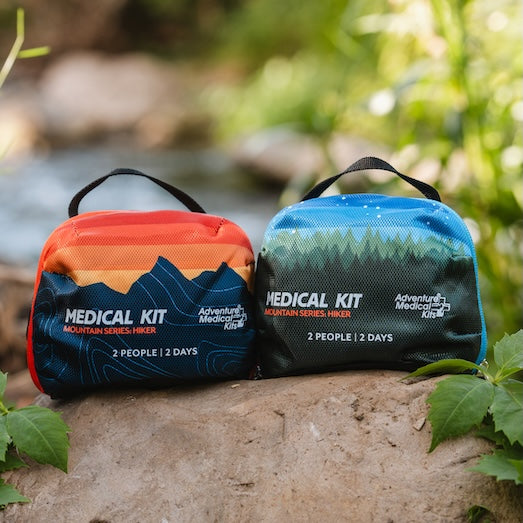By Christopher Van Tilburg, MD.
I’ve been chomped by a tick multiple times, as have most people who regularly tramp in the outdoors. It’s creepy – the tick drops onto your skin, burrows in painlessly, and sucks. Its anticoagulant can cause tick paralysis, and these arthropods carry all sorts of infections: Colorado Tick Fever (a virus), Rocky Mountain Spotted Fever (parasite), Tularemia (a bacteria), and the more commonly known Lyme Disease.
Lyme Disease can be scary. Lyme Disease is caused by an inoculation of the bacteria Borrelia burgdorferi. Ticks around the world carry it: In North America it’s transmitted by deer ticks (Ixodes scapularis) and the Western black legged tick (Ixodes pacificus). It was first identified in Old Lyme, Connecticut, after a group of kids complained of having a strange pain in their joints and an odd rash. So one might think, No problem – bacteria can be killed by antibiotics. But, there is a problem: Lyme is hard to kill and it can turn chronic. A single bite from a Lyme-carrying tick can require years of treatment and recovery.
The Real Scope of Lyme Disease
Lyme Disease is a widespread, global disease that is poorly understood. According to the CDC, in 2007 there were 27,000 cases in the U.S. and, because of the sometimes-vague symptoms, it may be dramatically underreported. While West Nile Virus, Dengue Fever, and even Swine Flu have gotten press lately, they account for much less illness. For example, in 2007, there were only 3,600 imported cases of West Nile Virus.
How To Protect Yourself
Outdoor adventurers should follow standard insect, tick and arthropod preventions when traveling in the backcountry or abroad. Ticks don’t jump or fly, they drop or fall onto humans from trees or grasses. So, long sleeve shirts and long pants tucked into socks is a great start.
Insect repellents, including ones containing DEET like Tender’s Ben’s 100® pump and Ben’s® 30 wipes, work well at warding off Ticks. For people looking for a DEET-free alternative, repellents like Natrapel®, which contains 20% of the active ingredient Picaridin, provide protection that’s as effective as DEET. Insecticides with Permethrin also work, and can be sprayed on clothing or impregnated into the fibers of garments.
When in tick country, remember to check your entire body after the day’s hike. Often you have two or three hours before a tick burrows. If it does, your chance of getting Lyme is low if you remove the bugger right away.
How To Safely Remove A Tick
Once burrowed, ticks are tricky to remove. Don’t try those old wives tales like fingernail polish or a match. The best technique is to use tick or splinter-removal forceps, grabbing as close as possible to the head, and pulling the tick out with slow, gentle pressure. Sometimes I’ve had to wiggle the head gently to unclasp the tick’s pinchers. Unfortunately, many people sever the body from the head. I’ve had to dig out many tick heads in the emergency room. Like all wounds, clean thoroughly with soap and water.
Recognizing The Signs Of Lyme Disease – What To Look For
How do you know if you have Lyme Disease? First, you will see a circular rash that looks like a target or bull’s eye called erythema migrans, which slowly enlarges. Then, the Lyme bacteria can spread to your body causing fever, fatigue, malaise, muscle and joint aches, headaches and swollen glands. Some patients have these symptoms for several months or years. That’s the big problem with Lyme Disease: It affects multiple parts of the body and may be difficult to diagnose if the initial symptoms go unnoticed. The symptoms can take anywhere between three days to one month or longer to emerge. Twenty percent of people who do not receive treatment develop severe complications within weeks or months after the bite, ranging from heart and neurological problems to severe attacks of arthritis.
If you think you need treatment, see your doctor and let him or her know that you have been bitten by a tick. Antibiotics are the mainstay of treatment, but don’t try to treat yourself at home with an old prescription in your medicine cabinet – treatment requires a specific antibiotic, like Doxycycline, with a longer course than typical.
Christopher Van Tilburg, MD, is the editor of Wilderness Medicine and the author of eight books on safety in the outdoors. His most recent book, Mountain Rescue Doctor: Wilderness Medicine in the Extremes of Nature, is now available in paperback.














